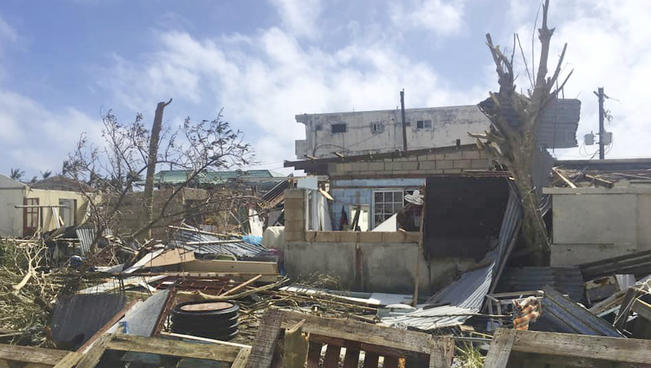The tropical cyclone swept across the mainland of Luzon on October 30 with wind speeds of 140 km per hour and gusts of up to 230 km per hour, which sheared off roofs and snapped many large trees in half.
Landslides have cut off roads, isolating some areas and preventing rescue teams from reaching trapped victims, national disaster management chief Ruben Carandang told reporters on October 31. Light helicopters have been deployed to fly rescue teams and search dogs to the isolated victims, he added.

Typhoon Yutu causes heavy rains in Manila Bay in the Philippines. (Photo: AFP/VNA)
Yutu is the 18th typhoon to hit the Philippines this year. According to the US National Aeronautics and Space Administration (NASA), it is likely to be the most intense and powerful storm of 2018. However, Philippine disaster officials said the storm was less powerful than Typhoon Mangkhut which hit the country six weeks ago.
On October 30, the storm was downgraded to warning Level Two with wind speeds of 135 km per hour.
Cutting a path just south of Typhoon Mangkhut’s trail, which killed more than 100 people and damaged about 180 million USD worth of crops, Yutu tore across the Philippines’ most populous island and dumped heavy rain along its way.
Local authorities had to evacuate nearly 10,000 people to safer ground before the storm arrived.
An average of 20 typhoons and storms lash the Philippines each year, killing hundreds of people and leaving millions in near-perpetual poverty. The country’s deadliest storm on record is super Typhoon Haiyan which left more than 7,350 people dead or missing across the central Philippines in 2013. –VNA